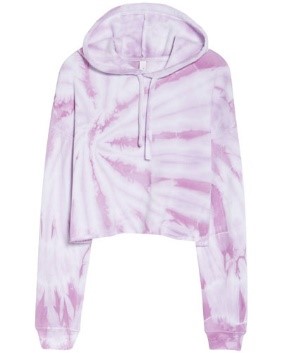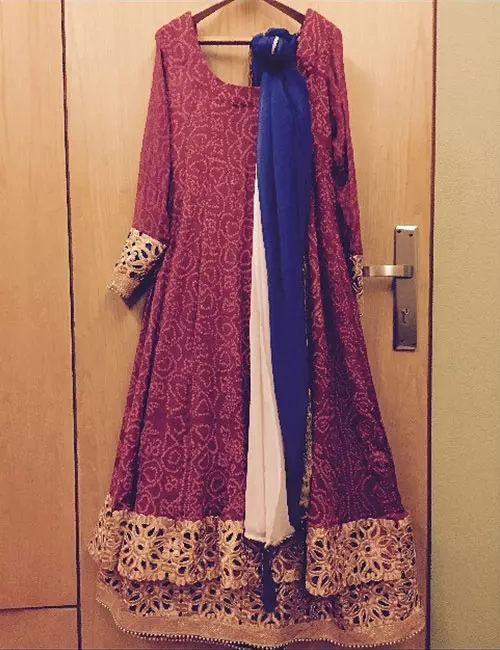A guest post by Gouri Kotwaliwale. A law student at National Law University, Nagpur, India, Gouri is a passionate environment lifestyle writer. She also enjoys singing and dancing.
Not only is it expensive to buy new clothes every season and a pain to pack when you have to move, fashion and clothing have a large footprint on the planet.
If you didn’t already know it, let me tell you something surprising: fashion is the second most pollution causing industry in today’s economy after the oil and mining industry.
Why is the fashion industry one of the top polluters?

- Fast Fashion: Like fast food, fast fashion describes that rapid production and consumption of items; in this case of clothes. Popular brands release new collections almost every two months, and consumers—trying to keep up with the trends—end up buying new things without needing them.
Every time a new clothing item is produced, resources—water, fiber, energy, land—are devoted to it. When more clothing than needed is produced, more and more resources are used up: resources that could have been used to grow food or protect wildlife. Additionally, since the collections are updated so fast, the quality is usually poor. - A demanding production process: Take the most popular fabric: cotton. Cotton is a resource-intensive crop that has a long growing season and requires a lot of water and nutrients. Processing cotton balls into fiber, and then fabric, also requires a huge quantity of water. Cotton is often dyed into a variety of colors using chemicals, which are released into water bodies.
- Poor recycling systems: Since clothes are made up of a variety and blend of materials, the recycling is difficult. Also, since so much of clothing is thrown away, the sheer volume makes it impossible to sort and recycle all of it. So, most of the used clothes end up in landfills.
Read a label on any of your regular garment: A T-shirt or a pair of pyjamas. The label will contain details of the fabric composition. You will often find blends of different compositions; a common fabric composition is cotton blended with polyester. Even if it is made of a single material like 100% cotton or 100% polyester, the label, threads, zippers or buttons are of different materials. Proper recycling requires separation of these materials. This is difficult and costly!
- Microfibers: A lesser known reason is that when we use clothes and wash them, they release microfibers, which drain into water bodies. The microfibers released and their potential to cause harm varies with each fabric, but their negative impacts on the environment is well documented and is continuously being studied.
The good news is that the fashion industry has (largely) accepted their environmental impacts. They’ve proposed a solution: sustainable fashion.
How the fashion industry wants you to become sustainable and why it’s not for everyone
When I began reading about sustainable fashion purchases and practices, the most common suggestion I found was to buy clothes made from sustainably produced raw materials: organic and sustainable cotton, pure linen, hemp, and other natural fabrics. But I ran into a problem: when I searched for brands and clothes that sell sustainable fashion products, their prices were so high! A simple T-shirt cost around 1500-2000 INR, which was not feasible for me.
Another issue that I learnt the hard way was something called “greenwashing”. In simple terms, greenwashing is a practice where a brand claims to be sustainable but shows no proof or selectively display “sustainability” information. For example, a brand may claim to sell T-shirts made of recycled fabrics but does not state that in making this T-shirt, they used thrice the resources as compared to the making of a normal T-shirt. Thus, you buy their products believing that you are being sustainable, but in reality, you are being tricked into buying something that is not at all sustainable—and you are paying thrice as much for it! (Here is an in-depth guide to greenwashing and how to spot it.)
Their steep prices and hard-to-spot greenwashing techniques made me realize that sustainable fashion is not the solution everyone makes it out to be. It definitely didn’t fit into my life just yet.
How could I be conscious of my clothing, make sure I’m not fooled and also not spend too much? I found the answer in the unlikeliest of places: my home. Several Indian household practices are the best examples of sustainable fashion practices!
Taking inspiration from Indian households…
If everyone behaved like Indian moms—who exchange, donate, reuse and repair clothes as much as possible—the impact would be amazing. Here are some things I observed in Indian households that fit perfectly into an eco-friendly wardrobe.
Refashion/repair and reuse:
This is the simplest and most interesting way of giving a new life to your clothing. The internet is flooded with ideas and tutorials of refashioning old items. Turning old jeans into a skirt, using old sarees to make lehengas, embroidering over worn-out areas of clothing and so many more. In case you are not willing to do this yourself, go to your nearest tailor. (This way, you are also supporting a local artisan and you get a refashioned item at a much lesser price than a new item.)

You can simply hand the same clothing item to someone else with minimal adjustments. Hand-me-downs are common in Indian households. Whenever I outgrew my clothes, my mother kept them separately for when they would fit my sister. Good quality coats and jackets were handed down to my cousin sisters after my sister has outgrown them. Some clothes and sometimes even accessories were given to the help at our house.
You don’t always have to wear old clothes. Old clothes can be used as washcloths or cleaning cloths. My mother has used our old T-shirts for wiping down surfaces at home!

Exchange or Borrow:
This is another method of sustaining the life of clothes. Often, we get bored with our wardrobe and there is nothing wrong with the feeling. In such scenarios, borrowing something from a friend or your family is a great way to try something new without having to spend any money on it.
I’ve practice exchanges throughout my time in a hostel. I realized how this simple practice is; every time we exchanged clothing, we had a new item of our choice in our wardrobe and no longer needed to buy something new. Since we gave away clothes we no longer wear, it saved the clothing from being hidden into the corners of our wardrobe or dumped into a landfill and increased its life by a few years.
Donate:
There is no dearth of people who need clothing. Find local shelters or orphanages. If not, ask the help at your home if they would like to have it. Just make sure everything you give is in good condition. Saurab’s family are big donors; they regularly donate old clothes and even furniture to orphanages.
Second-hand shopping:
There is nothing wrong with buying second-hand items. Many thrift stores or thrift markets have items that are in good condition. But if you are skeptical about buying second-hand clothes, I understand. You can start by exploring second-hand bags and other accessories?
Conclusion
Many blogs say that one way of resolving the price crisis is by buying one sustainable piece of clothing instead of five non-sustainable pieces. This isn’t practical at all because we might need multiple pieces of clothing! Even if we reduce our consumption of buying what is necessary, the price is still out of budget for almost everyone, and that’s a strong psychological deterrent for many.
There is nothing wrong with owning a variety of items. However, let’s make sure each item is used to its fullest. Let’s avoid buying items that we know will be for onetime use. This seemingly simple principle is at the core of many Indian households, including my own. If practiced in masses, it can be very effective!
This is, of course, only a part of the answer. Until changes are made at the production level and are delivered at reasonable prices, we cannot expect fashion to become-completely eco-friendly. But let’s start somewhere, shall we?

Dear Saurab most of the things you have cited, I do in 1.my normal activities. Make a bag of giveaways & clothes are always used by people who need them
2. Encourage people to use their old jeans by giving to fashion designers who cut pieces & use them on jackets& dresses. 3. I also make use of kitchen swobs and dusting so you don’t pollute the environment. 4. I met a young designer who actually reuses jeans & other material to make beautiful things.
Your article is a good reminder to people not to waste precious resources.
LikeLiked by 2 people
It’s awesome to hear that you practice all this, Preeti!
LikeLiked by 1 person
Sustainable fashion tips are excellent, I must say. A good post, Saurab!
LikeLiked by 1 person
Thanks so much, Asitha! This is a guest post. Really enjoyed reading it myself 🙂
LikeLike
Thank you, Saurab!
LikeLiked by 1 person
Excellent post. We are so misinformed with all the damage we are causing by just heading to the store and buying a shirt. Thanks for sharing these great tips.
-Gala
https://handicraft.market/2020/10/19/5-ways-to-wear-handmade-clothes/
LikeLiked by 1 person
Absolutely. Thanks for commenting! I will check out your post 🙂
LikeLike
Wonderful tips on how to make clothes last longer Saurab! It’s really about changing the mindset and wearing our existing clothes for longer rather than buying new every few months.
LikeLiked by 1 person
Thanks so much Sophie. This was a guest post from a wonderful writer, her name is Riya.
Great tips indeed, and I am trying to slowly integrate them into my life!
LikeLike
[…] Sustainable fashion tips I learnt from Indian households — Eco-intelligent™ […]
LikeLike